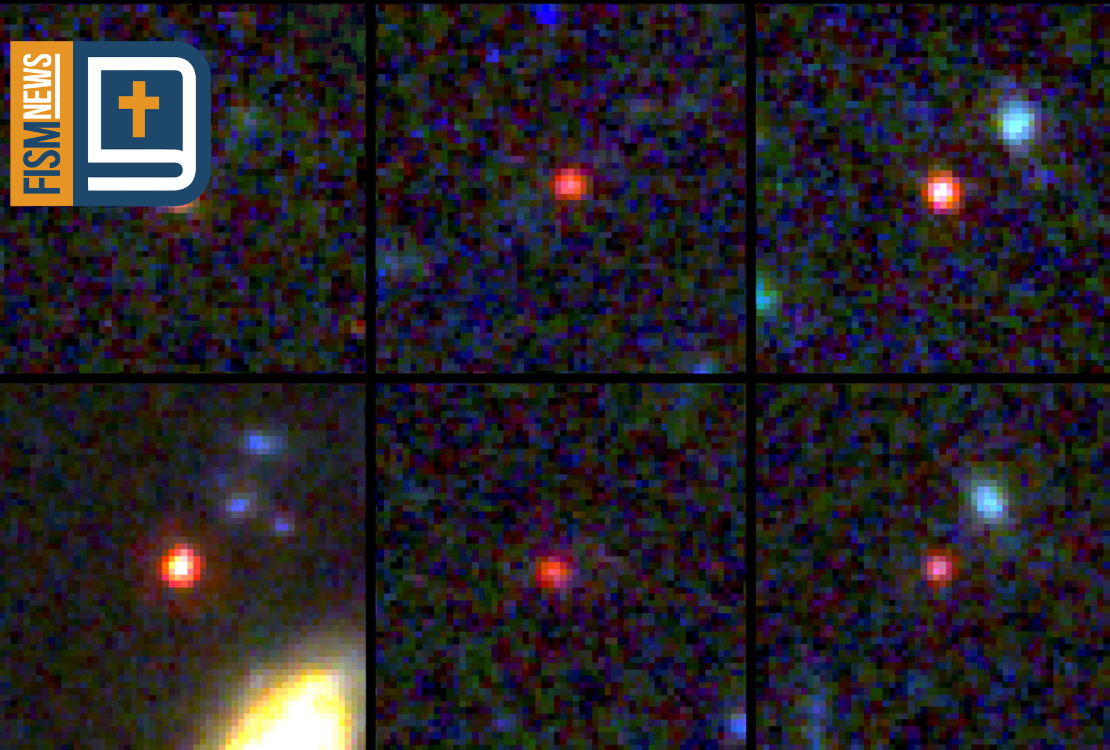
Ian Patrick, FISM News
[elfsight_social_share_buttons id=”1″]
Images taken by the James Webb Space Telescope (JWST) revealed in a recent study have thrown a wrench into some astronomers’ understanding of galaxies.
As revealed by a study in Nature, JWST has located six galaxies that appear to be as old as our Milky Way Galaxy. However, these particular clusters were massive and appeared to contain much older stars.
One of the authors of the study is Joel Leja, who works for The Pennsylvania State University in the Astronomy & Astrophysics department. Leja told Space.com that the authors “had specific expectations for the type of galaxies that live in the early universe: they are young and small.”
“Previous studies of the early universe with Hubble and other instruments tend to find small, blue, baby galaxies at early times,” Leja added. He also noted that the ongoing theory is that these young galaxies slowly build their structure over time.
So, it was quite a shock to Leja and the other authors of the study when they found galaxies they suspect belong in the “early universe” with red stars – typically denoting a star that has aged a considerable amount of time.
“No one expected to find these,” Leja said. “These galaxy candidates are simply too evolved for our expectations. They seem to have evolved faster than allowed by our standard models.”
Leja refers to these findings as “galaxy candidates,” because further observation and studies are needed to confirm that these discoveries are indeed galaxies.
Astrophysicist Ivo Labbe of Swinburne University of Technology in Australia, one of the study’s lead authors, called these discoveries “radically different – truly bizarre creatures,” according to reporting from Reuters.
“If the Milky Way were a regular-sized average adult, say about 5’9″ and 160 pounds, these would be 1-year-old babies weighing about the same but standing just under 3 inches tall. The early universe is a freak show,” Labbe added.
The astrophysicist perhaps best summarized their experience with these images by saying, “Webb continues to amaze and surprise us.”
Author’s Biblical Analysis
What a time to witness the splendor of God’s creative Majesty!
While such galaxy formations are puzzling to scientists and experts, the Bible tells us clear as day how these wonders formed in the first place – from the very mouth of God himself.
The first chapter of Genesis lays the foundation of the firmament that God created through His very words in verses 6 through 8.
Then God said, ‘Let there be a firmament in the midst of the waters, and let it divide the waters from the waters.’ Thus God made the firmament, and divided the waters which were under the firmament from the waters which were above the firmament; and it was so. And God called the firmament Heaven. (NKJV)
In verses 15 and 16, it explains that God populated the firmament with “lights … for signs and seasons, and for days and years.”
Later books of the Bible praise God specifically for His creative genius regarding his creation of the heavens.
Isaiah 42:5 says that God “created the heavens and stretched them out.” Psalms 33:6 says, “By the word of the Lord the heavens were made, And all the host of them by the breath of His mouth.” In Psalms 147:4, it says “He counts the number of the stars; He calls them all by name.”
Knows them by name! To think we’ve only just discovered this set of possible galaxies and God already knew of them and countless more.
In fact, that proves that God is the prevailing factor that the scientists in this study don’t consider.
They are baffled because their understanding of the cosmos is based on the Big Bang Theory. They say these types of galaxies go against the currently understood model of galaxy formation and progression, and therefore they are perplexed by its existence.
Thank the Lord for His Word, that we may have a glimmer of understanding. Hebrews 11:3 says that it is through faith that “we understand that the worlds were framed by the word of God so that the things which are seen were not made of things which are visible.”
In other words, the universe did not just spawn itself into existence and operates by its own rules. It needed a Creator – and who better but the Almighty One?
